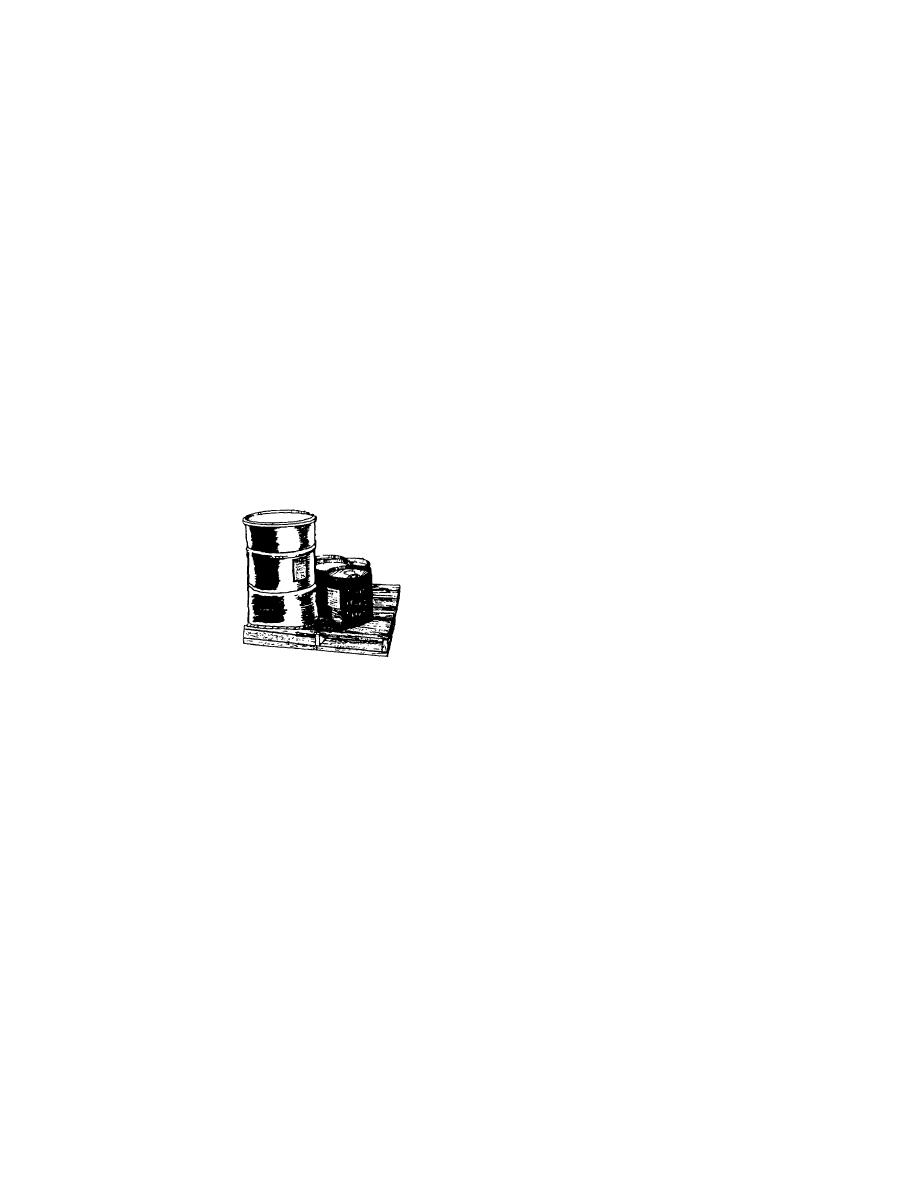
TB 43-0244
Keep floor dry.
Put different types of hazardous waste in
separate containers. Don't mix hazardous and
Remove anything that would cause some one to
nonhazardous wastes together.
trip.
Keep containers closed except when you fill or
Make sure work areas are cleaned up as soon as
empty them.
work is completed.
Make sure you have a secondary containment,
Keep access clear to fire extinguishers protective
such as sand bags, around the container that'll catch
equipment and eyewash stations.
and contain spills.
SECTION VII. STORING SUPPLIES
SECTION VIII. REDUCE WASTE
7-1. Storing Hazardous Waste. After use service
8-1. Reduce Waste in the Work Place. You won't
supplies and materials become waste. It'" important that
have to worry about disposing of a lot of waste if you cut
you handle and store waste oil and the like safely so it
down on the amount you generate.
does not damage the environment.
8-2. Reduce Hazardous Waste in the Work Place.
7-2. Tips on Storing Waste. Stock up on these tips on
Here are some ways to reduce the amount of hazardous
storing waste.
waste generated in your work area:
Store waste in containers that are in good
DON'T: Stockpile hazardous materials. Order only
condition. Check the containers for rust or dents.
what you'll use and use only what you need.
Keep
the
DO: Rotate stock to use the oldest item first.
waste containers
off the ground
DON'T: Use a hazardous product if you can change
where moisture
it for one that's nonhazardous. For example, use a soap
will cause them
and hot water parts cleaner instead of a vapor
to
rust
and
degreaser.
maybe cause a
spill.
DO: Recycle used waste oil, solvents, antifreeze
and other wastes when possible.
Mark containers with the words HAZARDOUS
WASTE. Put a label on the outside of the container
DON'T: Mix hazardous and nonhazardous wastes
that identifies the type of waste inside.
together.
Make sure the waste containers are away from
the traffic flow so that accidental spills won occur.
Isolate containers with flammable or reactive waste.
6

